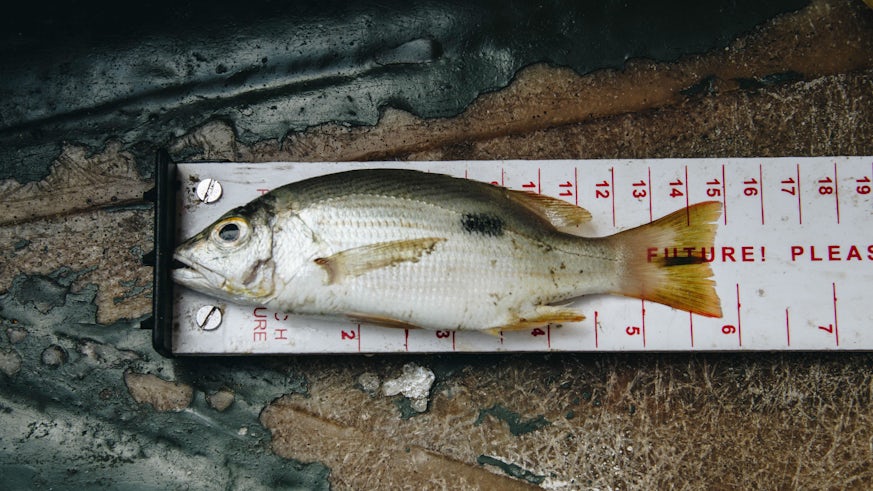Fisheries discarding edible fish pose a threat to food security
26 February 2018

New research suggests small-scale artisanal fisheries in Sri Lanka are throwing away more marine species than they keep.
The study, conducted by Cardiff University and Swansea University and in collaboration with Susantha Udagedara of the Blue Resources Trust, has been published in the journal Frontiers in Marine Science. It showed small-scale fishers in Sri Lanka were throwing away more than 50 fish for every trip they made.
Researchers examined the amount and sizes of fish that were being discarded at a landing site in Puttalam Lagoon. For all 63 fishing trips observed over the course of a week, all catches were sorted on land and no fish were returned to the sea. They recorded 2,752 fish being thrown away.
Although the reason for rejecting them was not always clear, fish might have been deemed too small, or not valuable enough to sell. In all cases, fishers caught many species they weren’t originally targeting, which is called bycatch. These were frequently juvenile fish, important to the sustainability of the lagoon.
Of the 62 species recorded in the survey, more than 82% were routinely discarded.
32% of people living around the lagoon, typical of the kind found in the country, are in poverty – equating to 5,000 households. The team calculated that bycatch could provide three fish a day for every household.
Benjamin Jones, a researcher at the Sustainable Places Research Institute, founding director of Project Seagrass and lead author of the study, said: “In this era of increasing food insecurity, these findings represent a serious concern for Sri Lanka. These discarded fish could have helped to feed the poorest people living in nearby communities.”
Co-author Dr Richard Unsworth of Swansea University said: “These alarming findings add to other similar observations made by our team across the Indo-Pacific region where many fish are commonly wasted in even small-scale fisheries. This places the food security of dependent people clearly in doubt.”
As well as analysing the rejected species found on the shore, the team also used interview data from people living around the lagoon to examine trends and surveyed fish markets to gauge customer preferences.
All fishers said they preferred fishing in seagrass meadows because of the abundance of fish they can catch there.
Benjamin Jones added: “Seagrass meadows are a nursery for baby fish. If these fish are being removed and simply thrown away as we’ve discovered, very few are reaching adulthood – or the stage at which they would normally reproduce. This leaves their future in doubt.”
Dr Leanne Cullen-Unsworth, a Research Fellow at the Sustainable Places Research Institute, said: “Billions of people rely on fish for protein, and small-scale fisheries provide over 50 million people with jobs. These findings provide concerns for not only people in poverty, but the people that depend on these fisheries for their livelihoods. If this continues, there simply won’t be a fishery.”
The study found fishers targeting shrimp, which is exported to countries such as Japan and the USA, had higher levels of bycatch.
Potentially 90% of the world’s fish stocks are threatened by over-fishing – when more fish are caught than the population can replace.
The report’s authors conclude it is possible poor social networks are preventing discards reaching the wider community. They recommend the establishment of sustainable management practices through community integration and education as well as reducing unnecessary food waste.